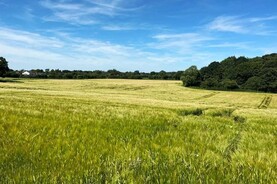Grass growth
There is huge variability in terms of grass growth and ground conditions between farms. Grass growth remains a challenge in the south and east, and many farmers have had to go back in with more supplement again in recent days as growth falters.
It’s really the wrong time of the year to be in a grass deficit, as farms should really be building covers now and extending the rotation length.
Farmers can only play the hand that they are dealt, and if extra meal or silage is required, then so be it.
The slow growth is as a result of high soil moisture deficits, with Met Éireann reporting soil moisture deficits of 40 to 70mm in the east and south.
Growth will be curtailed at the higher ranges. Monitor the situation carefully, walk the farm regularly and act quickly as the situation can change quickly, especially with thunderstorm activity.
On farms that are affected by slow growth due to lack of moisture, I wouldn’t be too concerned about building up covers.
When the rain does come, growth rate bounces and compensates. So, while we would normally like cows to be on 25 to 26 day rounds now, maintaining a 21 day round should be OK.
On the other hand, farmers in the west don’t want to see any more rain.
Silage
All second cut silage or surplus paddocks should be cut as soon as possible from now on. While the temptation might be there to let them bulk up a bit more, it’s a false economy.
For one thing, silage ground that has been growing for eight weeks or more will be maxed out in terms of yield potential. Quality will deteriorate quickly in these crops.
More importantly, this area under silage will be needed for grazing in order to build up grass covers for the autumn.
Essentially, there are only six weeks of decent grass growth left in the year, because after September is over growth rates will be below herd demand.
Building up grass and extending the grazing season is a surefire way to reduce winter feed requirements.
Not only that but it reduces costs and increases profitability. In terms of fertiliser, on farms with a high demand for grass, you should spread 25 to 30 units/acre of N now, and more in mid-September.
Robots
I got a good bit of reaction to the article on robot running costs last week. I think the key learning is that when buying a robot you are not just buying a machine, but entering into a partnership with a company for support and back-up for the lifetime of the robot.
Cost and customer service is key, and ultimately the balance of power rests with the company providing the service. One of the areas that we didn’t highlight is that in some companies, additional charges are being introduced for out of hours calls to support hotlines.
This is to incentivise more support related calls during the day and keep out of hours calls to emergency only. However, this will work against farmers who have off-farm jobs and aren’t around during the day.
To keep running costs low, farmers must be prepared to get to know the machine really well and fix as many problems as they can themselves.






 This is a subscriber-only article
This is a subscriber-only article










SHARING OPTIONS: